Vitesse are having a torrid time this season, with just four wins to their name, the Arnhem-based side finds themselves languishing in 17th place in the Eredivisie.
Although the club has never won a top-flight title, it has established itself as a development ground for future top-class talents.
For example, many Chelsea academy players were sent on loan to the Dutch side to get a taste of first-team football, including the likes of Mason Mount and Bertrand Traoré. Moreover, Spanish giants Real Madrid sent the now Arsenal captain Martin Ødegaard on loan to Vitesse in a bid to aid his development.
While the first team may be struggling, the Vitesse academy is developing some wonderful talents of their own, and one of those players will be the focus of this tactical analysis.
Mikah Hoop is already making waves as a winger for Vitesse’s U15s team, continuously putting in an array of impressive performances in the U15 Divisie. Hoop has caught attention with his electrifying pace and technical ability.
As a dynamic winger, he possesses the versatility to operate on either flank, offering a potent attacking threat wherever he is deployed on the pitch.
With his youth and raw talent, Mikah Hoop represents a promising prospect for Vitesse’s youth academy, and this scout report will highlight what makes him such an exciting young player.
Forward momentum
In terms of tactics, Hoop primarily lines up on the left wing for Vitesse U15s in a 4-2-3-1 system, allowing him to cut inside onto his favoured right foot.
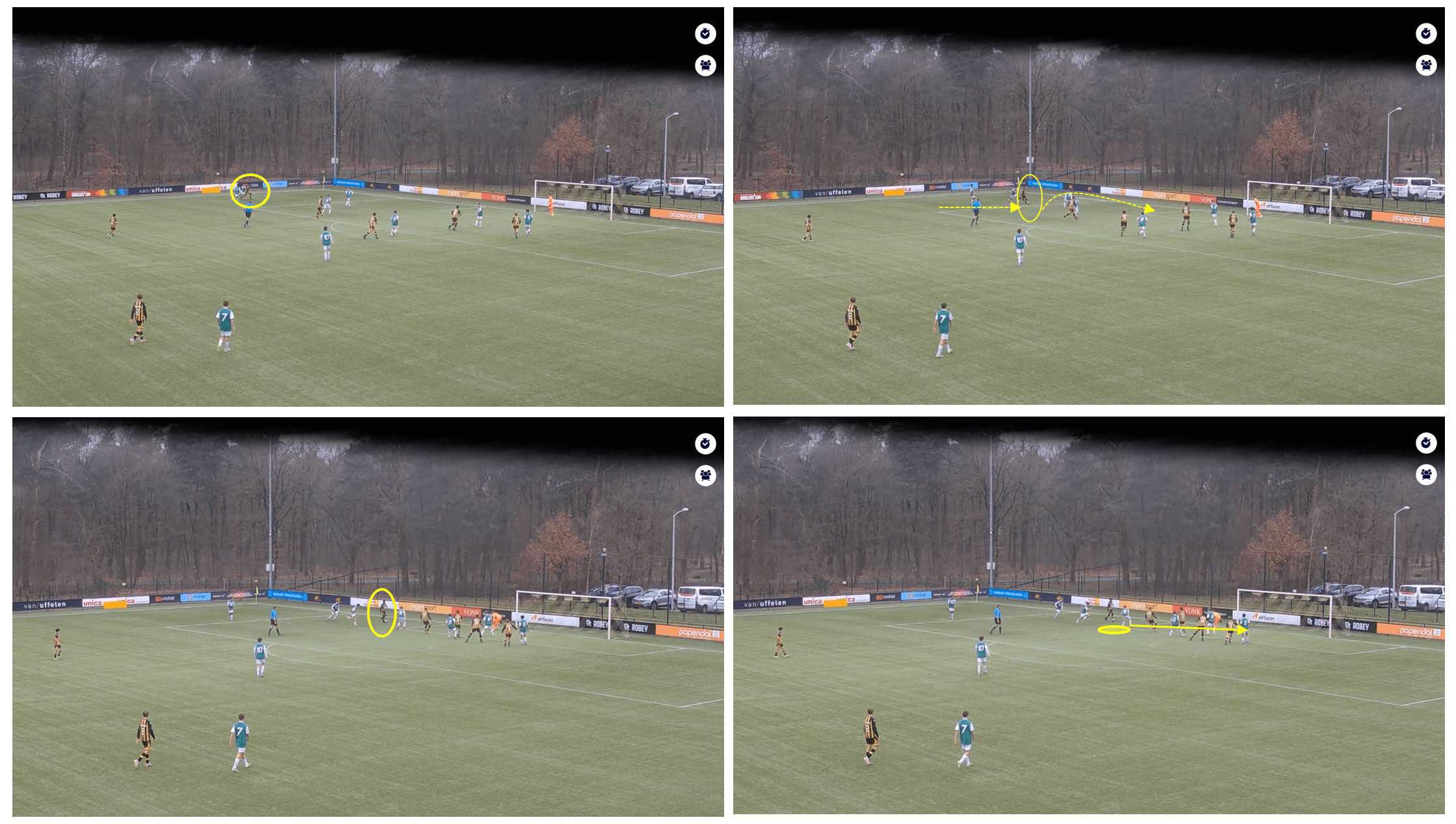
The 15-year-old is an incredibly skilful winger who thrives when given the opportunity to isolate and then beat his opponent in 1v1 situations. In this example, Hoops picks up the ball, and his first thought is to run at his opponent. Hoop then weaves his way in and out of challenges before taking a shot at goal.
His ability to thrive in these situations is an asset for Vitesse as it puts pressure on the opposing defence. Hoop’s movement draws the defenders towards him, which creates space in the opposition’s defensive shape. This means that there is time and space for his teammates to get into optimal shooting positions in the box should a cross be incoming.
Mikah Hoop averages 11.6 take-ons per 90, being successful in 6.4 per 90, clearly indicating how this is an important element to the youngster’s style of play.
Furthermore, at 159 cm, Hoop has a very low centre of gravity, which means it is very difficult for the opposition to hustle him off the ball. This also allows him to change direction when travelling at speed, which plays a huge role in his ability to create space for himself.
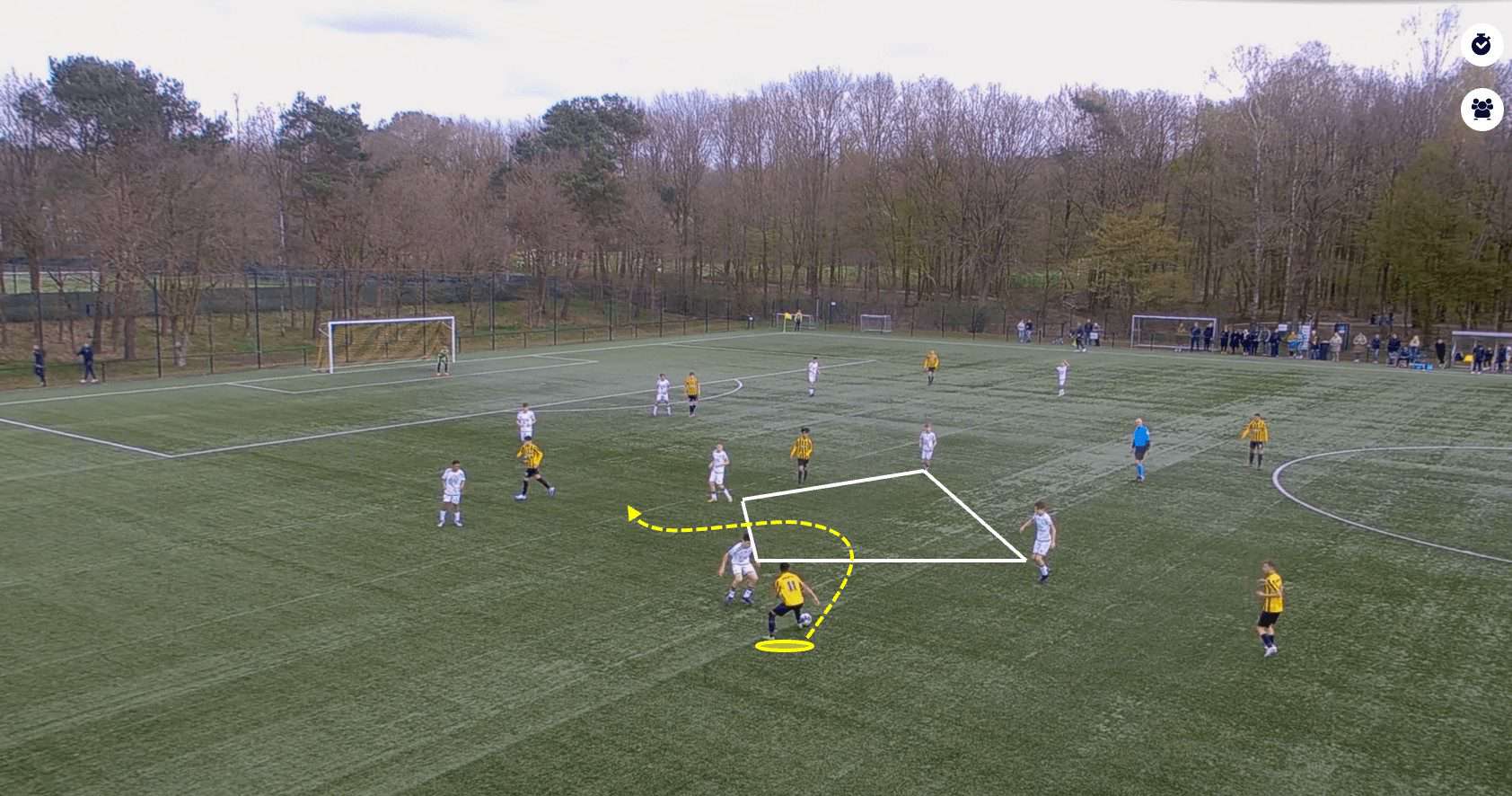
Here, for example, he notices the opponents closing in on him and manipulates this to his advantage. He carries the ball towards the opponents and then uses his speed and agility to weave his way out of the tight space, simultaneously taking all four players out of the game.
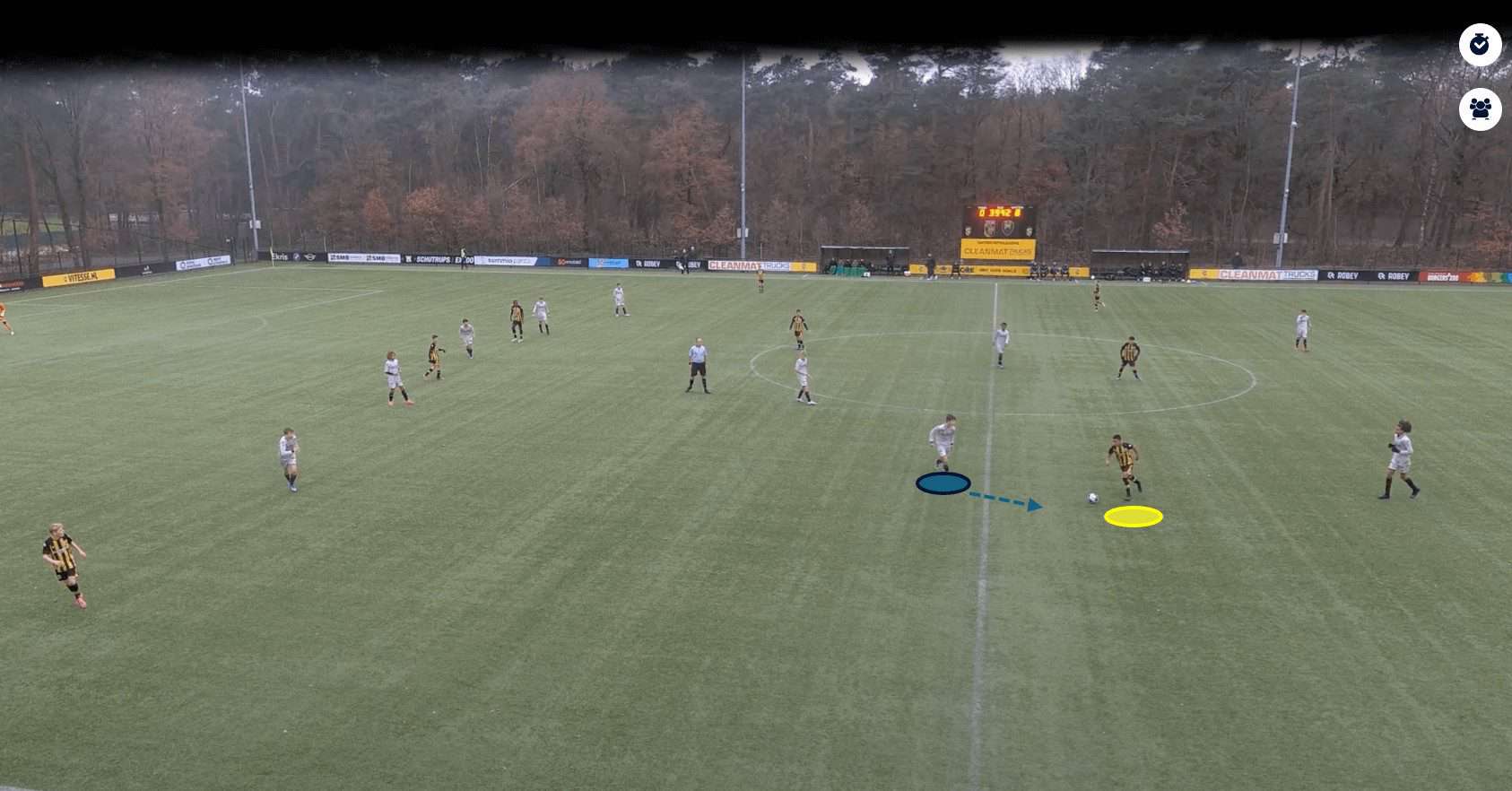
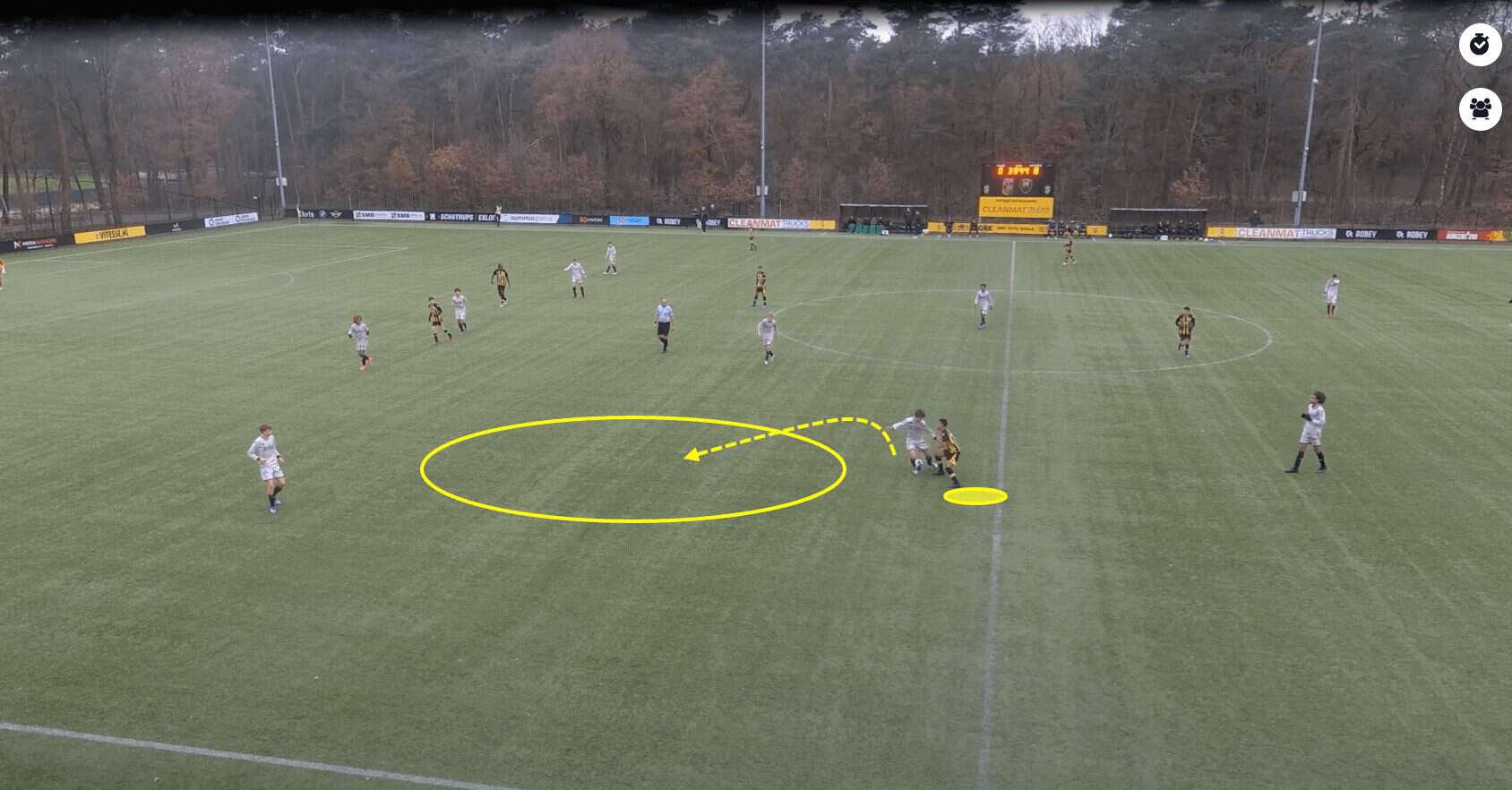
Mikah Hoop adds a huge amount of unpredictability and creativity to the team’s attack. His willingness to dribble past opponents and take risks can catch the opposition off guard and create moments of magic that lead to goal-scoring opportunities.
Whether through skilful dribbling, sudden changes of direction, or sheer pace, he can unlock defences and create scoring chances out of seemingly impossible situations.
In this instance, when Hoop senses the opponent closing him down, he uses his trickery and agility to nutmeg him and change direction himself to retain possession of the ball. He then carries the ball into the space ahead, which is free for him to exploit since he has completely taken the opposition player out of the game.
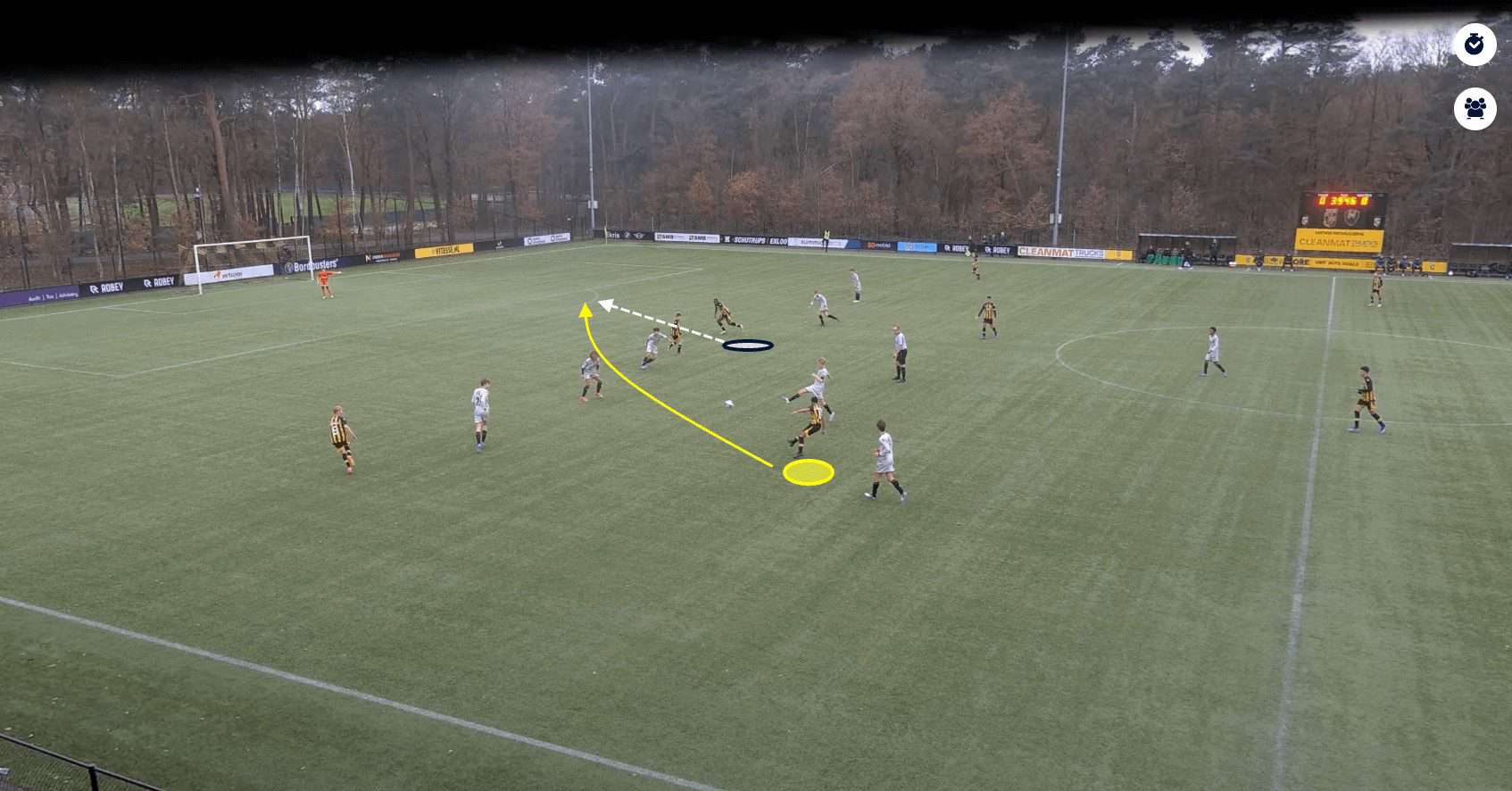
What’s more, the 15-year-old does not lack confidence. As we can see here, he notices the run of his teammate and executes a pass with the outside of his foot. He really does know how to generate attacking momentum out of seemingly passive situations.
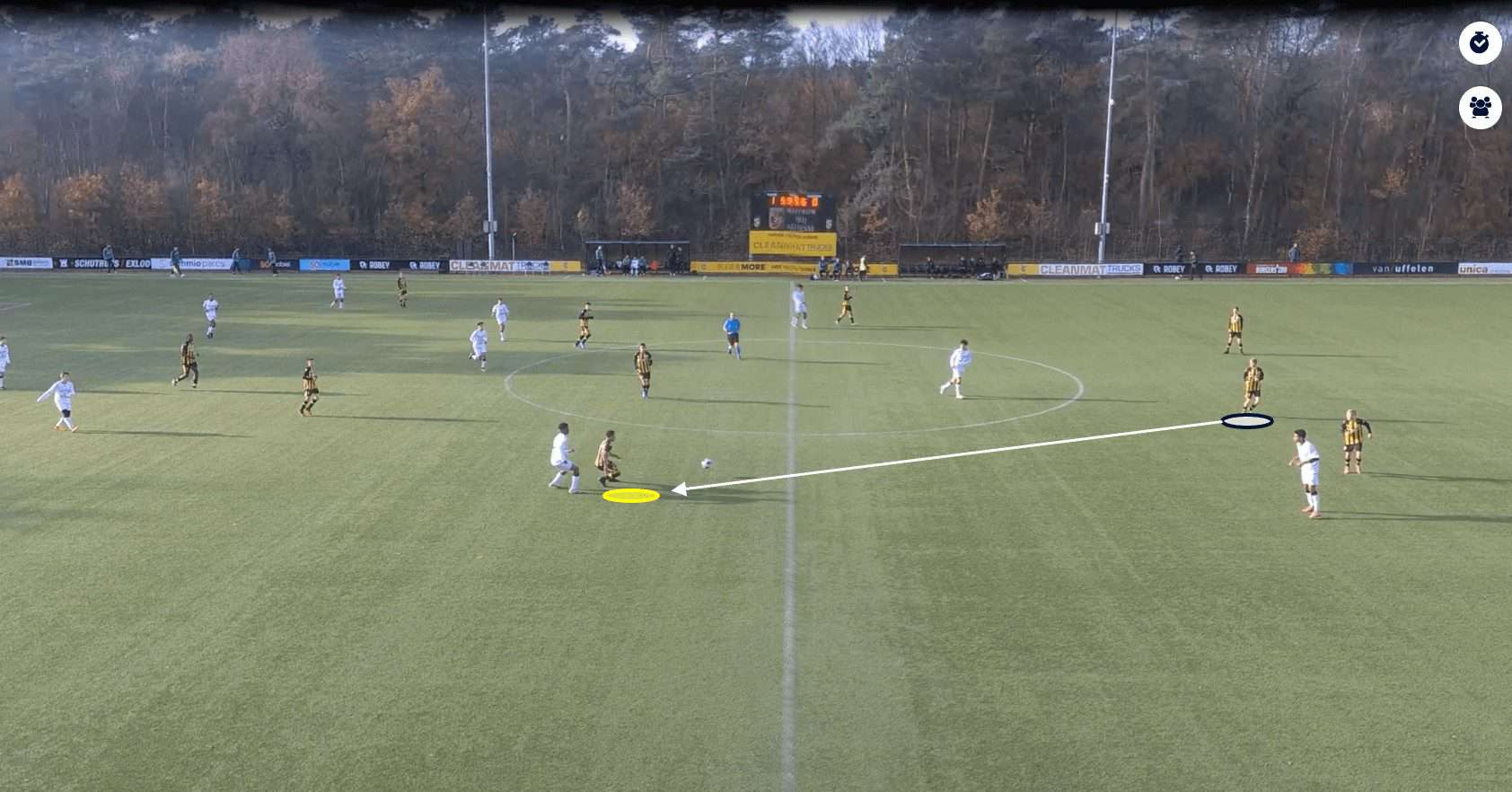
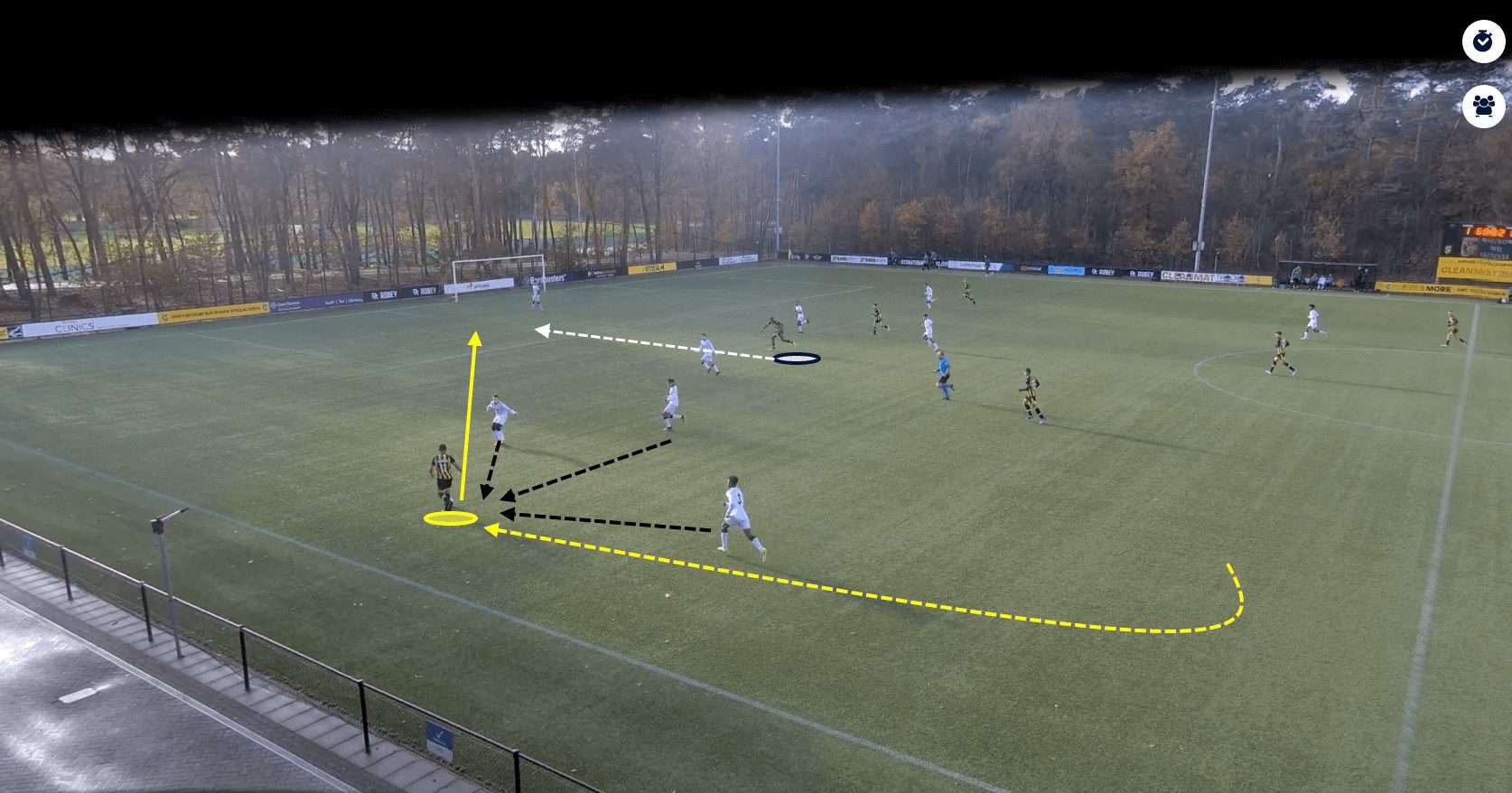
This is an excellent example of Hoop receiving the ball and injecting some forward momentum into Vitesse’s play. He calmly rolls his opponent and turns into space; then, the young winger uses his rapid acceleration to carry the ball down the flank before playing a ball in behind the defensive line.
We can also see in this example that three opponents are looking to put him under pressure. By enticing defenders out to engage in individual battles, the Vitesse winger can exploit this agility, speed, and skill to beat his opponents and create goal-scoring opportunities.
His individual brilliance is often a potent weapon in breaking down stubborn defensive structures and unlocking tight defences.
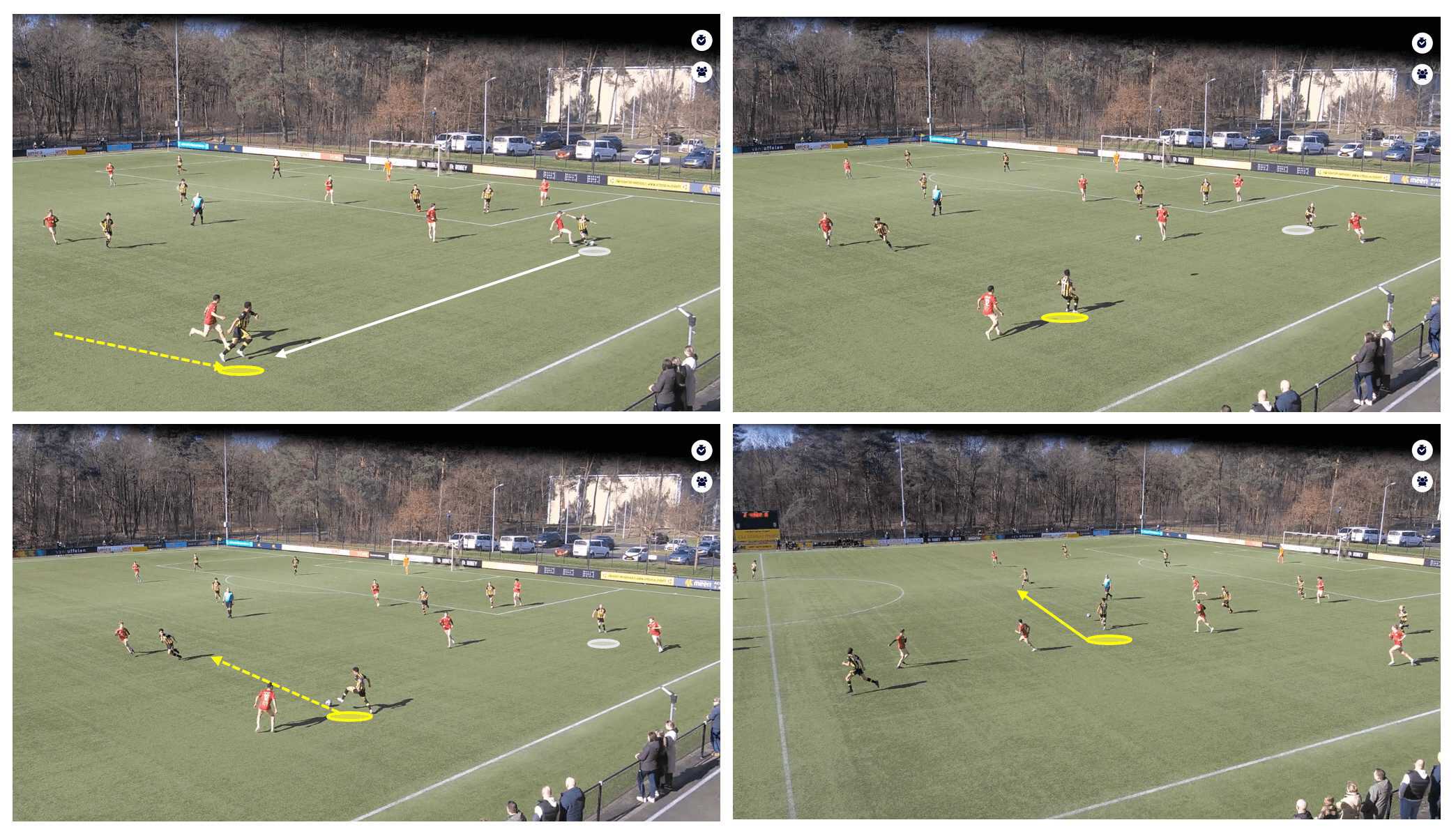
Additionally, Hoop being a primarily right-footed player on the left means he is an ideal outlet for Vitesse when they want to build up into central areas.
We can see here that the defender is looking to play a forward pass, and Hoop makes the run in front of his opponent. He then brings the ball under control and carries it into the central area before passing it on to a teammate.
This also creates space for the fullback to push forward into the attacking third should Vitesse wish to play a long pass forward.
Goal Involvements
Mikah Hoop is not just the player Vitesse U15s turn to in order to carry them up the pitch. He is actively involved in goals, whether it be finding the back of the net himself or laying on opportunities for his teammates. The 15-year-old possesses a real attacker’s instinct when in the final third.
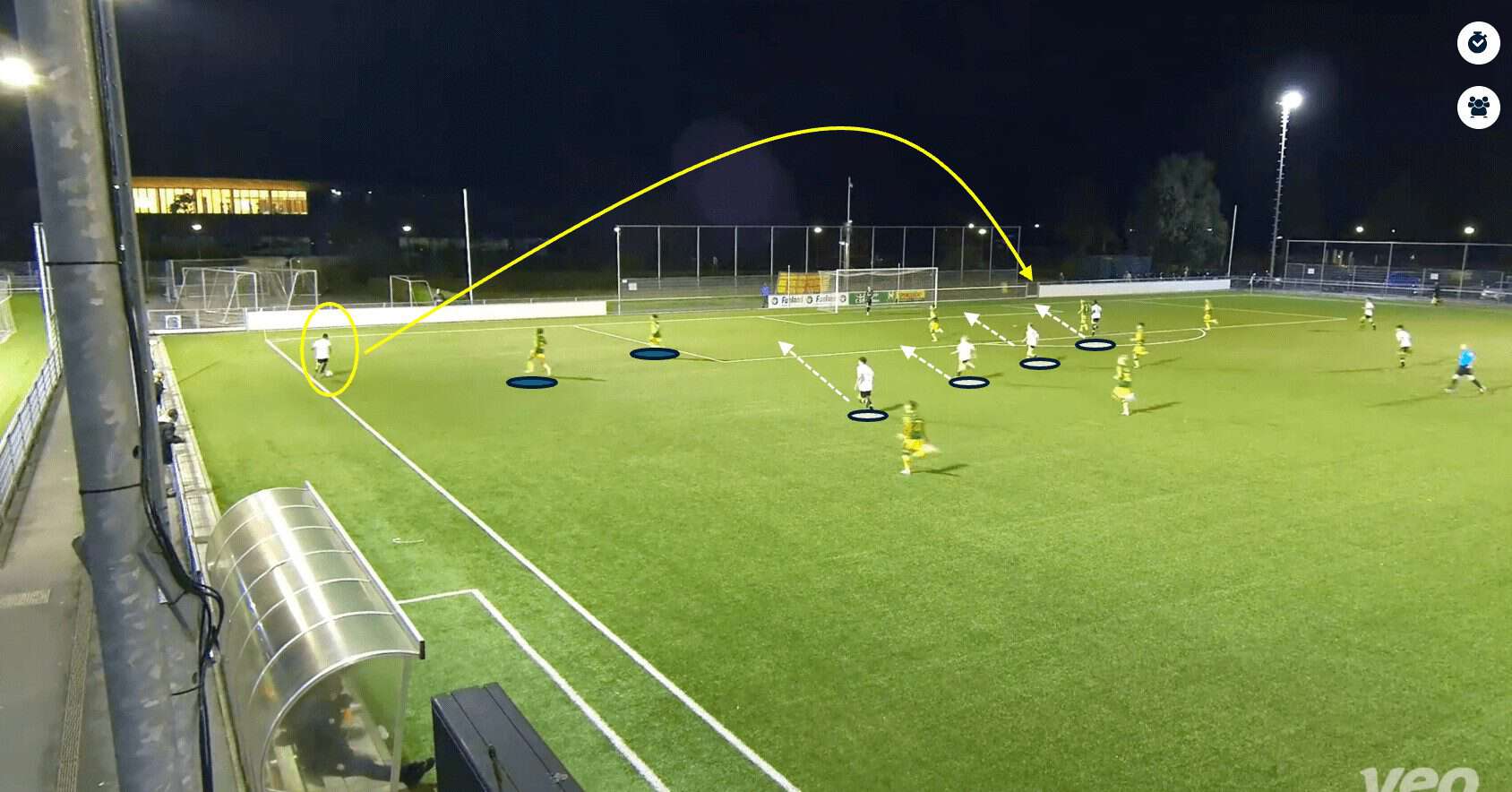
During the attacking phase, Hoop will mostly look to stay as wide as possible to stretch the play and create spaces in central areas, as we can see here. Four Vitesse runners are making their way into the penalty area. Plus, we can see there are only two opposition defenders, automatically giving Vitesse an attacking advantage via this overload.
Furthermore, stretching the play in this manner makes it more difficult for the opposition to maintain a compact defensive shape, as defenders are pulled out of position to cover Hoop’s presence.
Moreover, although the young Dutchman is right-footed, he is more than comfortable using his left which makes it difficult for defenders to anticipate which foot he will opt to use to play in a cross.
The Vitesse starlet averages 8 crosses per 90 which shows us that this is a key element to his team’s attacking play and as a result, he averages 0.46 assists per 90.
In this instance, recognising the advantage his team has, Hoop uses his left foot to play a looping cross to the far post for his teammate to head goalwards. By delivering crosses from wide areas, Hoop provides the team with a direct route to goal and increases the variety of attacking options available.
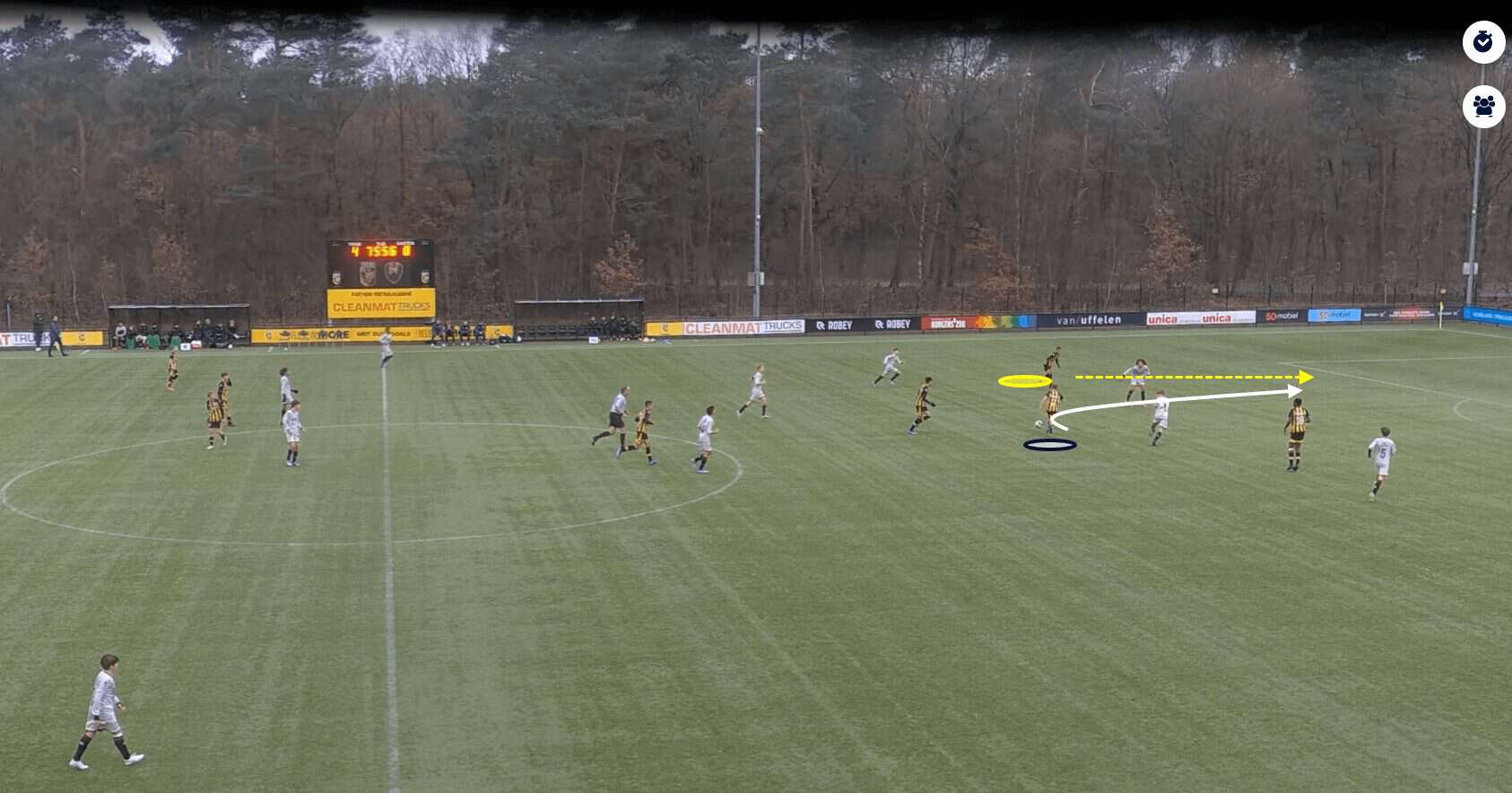
Hoop also chips in with his fair share of goals, averaging 0.54 goals per 90 so far this season. He typically looks to use his speed to make runs in behind the opposition’s defensive line.
On this occasion, he times his run well, and the attacking midfielder obliges by playing a wonderfully weighted pass into Hoop’s path. As a result, the winger can calmly place the ball beyond the goalkeeper.
The goal-scoring threat provided by the young winger adds an extra dimension to the Vitesse team’s attack. Their opponents must account for the winger’s goal-scoring ability which often sees them having to adjust their defensive strategy in a bid to contain him.
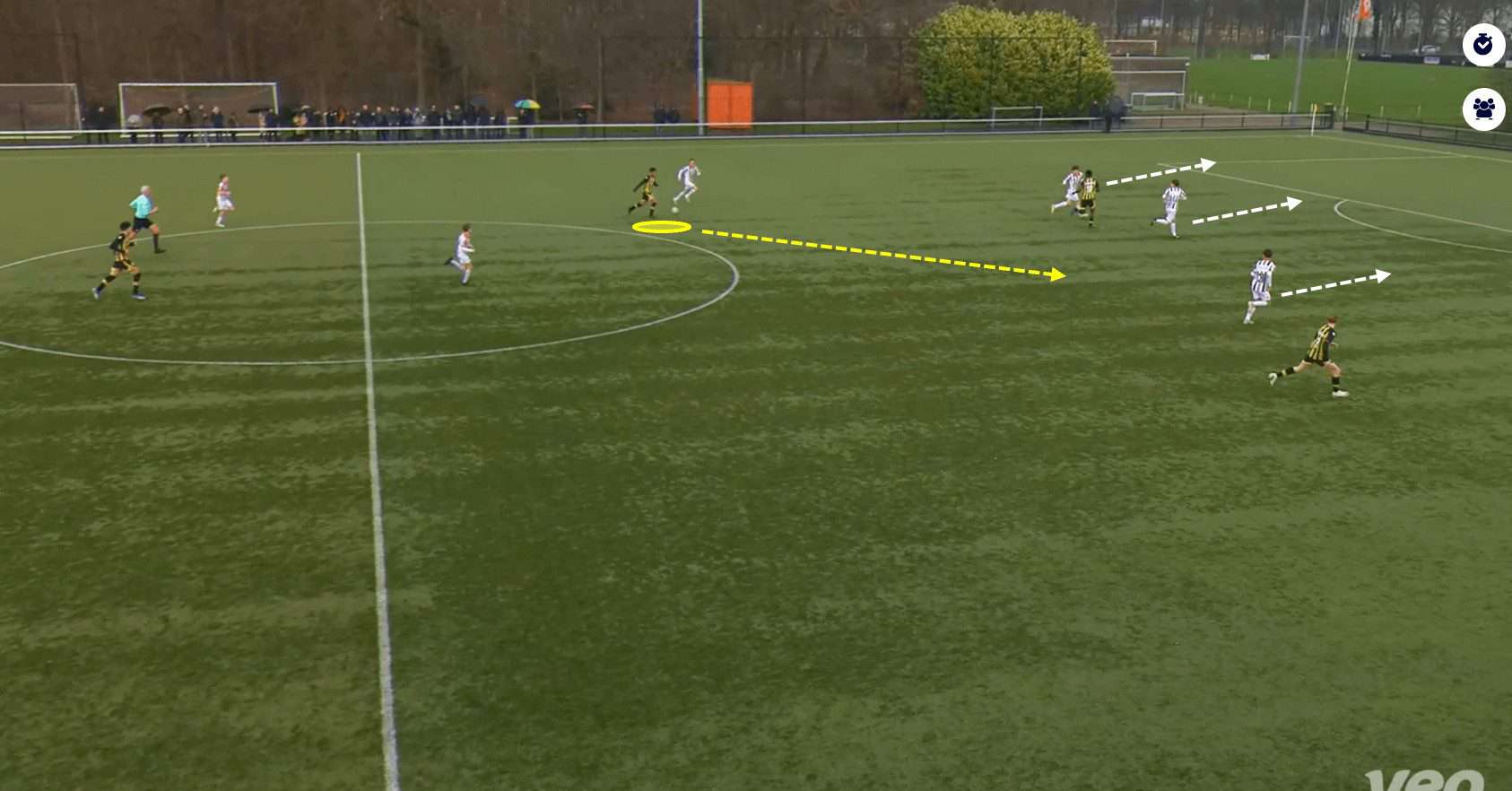
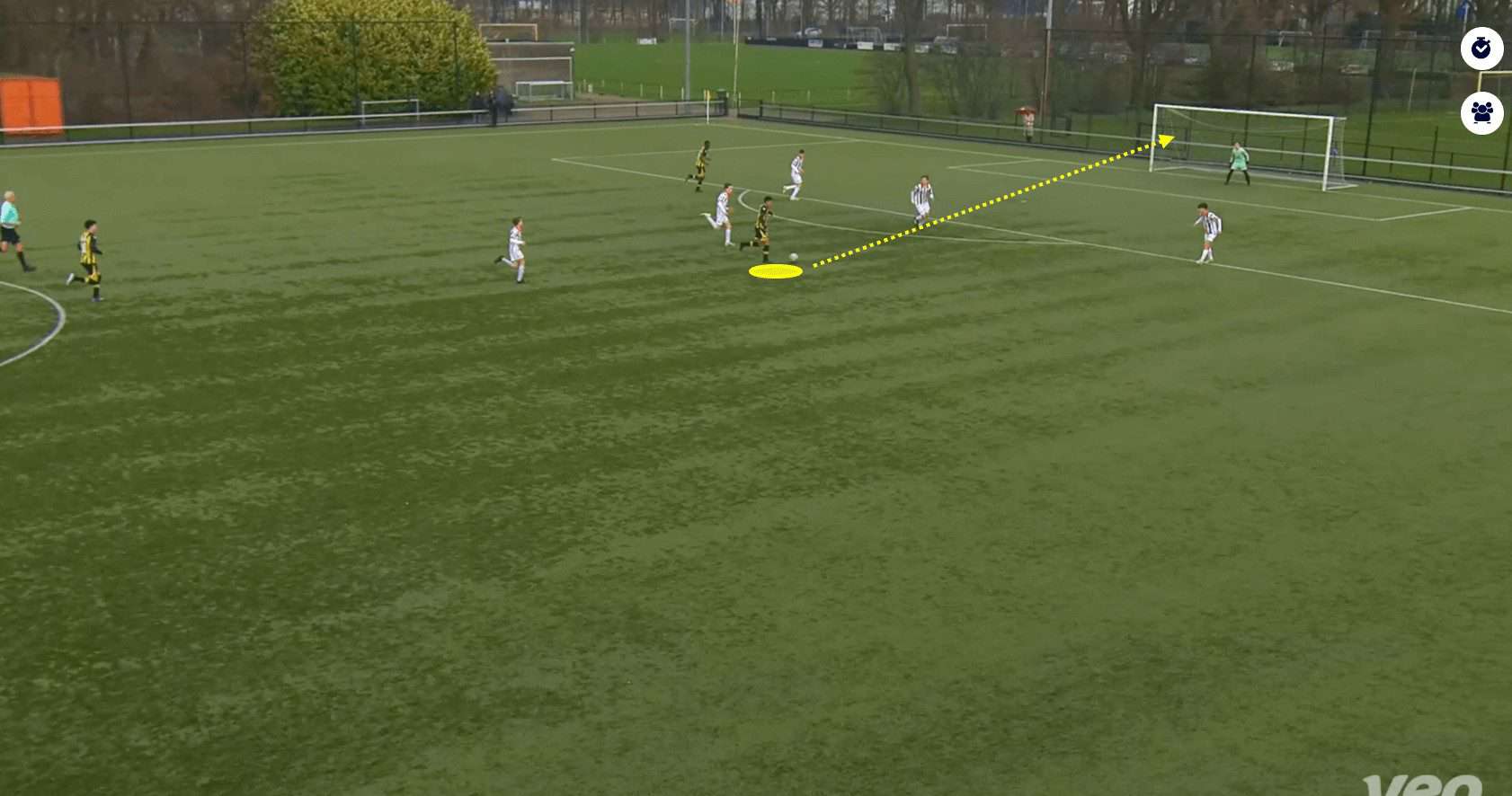
The 15-year-old is fearless in his attacking play, so it comes as no surprise that he also loves to take a shot from distance. In this example, Hoop drives forward with the ball, forcing the opponent’s back, which just opens up space, inviting him to shoot.
The data shows that he averages 2.7 shots per 90, with 1.16 on target per 90. 1.78 of those shots are from inside the area per 90, while 0.93 shots per 90 are from outside the area.
Hoop’s willingness to take long shots can catch the opposition off guard and lead to unexpected goals. Even if the shot does not result in a goal, it can force the goalkeeper to make a save or parry the ball away, creating opportunities for rebounds or second-chance opportunities for teammates to potentially capitalise on.
Additionally, when the 15-year-old is running at the defence, they often fall back, as we can see above, which leads to space for attacking players to exploit if they push forward to join Hoop.
Recoveries
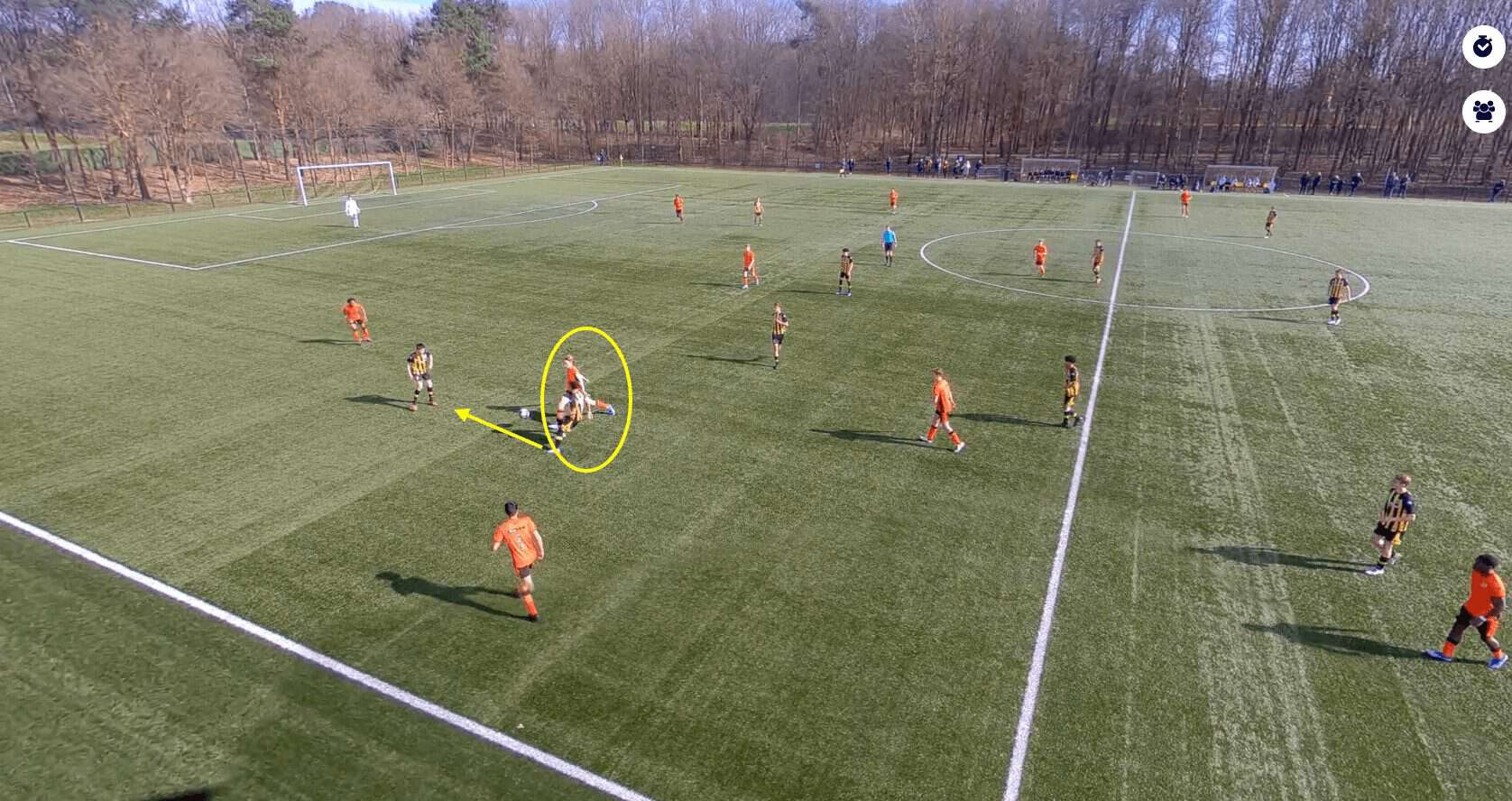
Defensively, Vitesse U15s don’t look to press high but they are always ready to battle for possession when the opposition begin to build out of defence and are playing towards the midfield.
We can see here that Hoop sticks close to his man, which means that the Vitesse youngster is on hand to get a foot in and recover possession when his opponent takes a poor touch.
This disrupts the opposition’s attacking play and prevents them from building sustained pressure. Furthermore, this allows Mikah Hoop and Vitesse to launch quick counter-attacks and transition the team from defence to attack efficiently.
This can of course catch the opposition off guard and create goal-scoring opportunities for the team in transition. Plus, this allows Vitesse to fully utilise Hoop’s pace in these situations.
Moreover, as he is defensively astute, Mikah Hoop can act as the first line of defence in wide areas, effectively pressing and intercepting opposition passes to regain possession. His ability to read the game and anticipate opposition movements allows him to ensure he gets into optimal positions to prevent the opposition from building attacks.
The Dutch winger averages 7.6 ball recoveries per 90, which shows how important he is to Vitesse from a defensive perspective. Additionally, he averages 2.7 tackles per 90 so he is more than willing to get stuck in and work for the team.
Additionally, Hoop does not perform well in the aerial duels, averaging 0.39 per 90, winning 0.15 per 90, which is no surprise given his height. However, he shows excellent tenacity in the ground duels, averaging 2.1 per 90 and winning 1.25 per 90.

When the opposition is in the attacking phase, Hoop ensures that he gets back into the defensive structure quickly and efficiently, as we can see here.
He contributes to the team’s defensive solidity and compactness and gets into positions that allow him to make interceptions. By tracking back diligently and providing defensive cover in wide areas, Hoop ensures that the opposition attackers are unable to build an attack and limit their options for getting in behind the Vitesse defence.
Mikah Hoop displays a disciplined defensive work rate that helps his team maintain defensive shape and organisation, making it more difficult for the opposition to break through and create goal-scoring chances.
Furthermore, he provides valuable support to the team’s full-backs and central midfielders in the defensive phases of play. He works well to coordinate his defensive actions with those of his teammates meaning they can double up on opposition attackers, and win back possession.
Conclusion
Overall, it’s evident that Mikah Hoop brings a unique blend of qualities to the Vitesse squad that makes him a truly exciting prospect.
This analysis has shown that he possesses lightning-quick acceleration, which allows him to burst past defenders with ease and create separation and space in crucial moments of the game.
Moreover, Hoop’s dynamism and confidence in 1v1 situations add another dimension to his game. He is a joy to watch when he is cutting in from the wide areas, weaving in and out of opposition challenges.
Despite his attacking prowess, the 15-year-old never avoids his defensive responsibilities, which showcases his commitment to the team but also adds a layer of defensive solidity to his game.
Mikah Hoop is so much more than just a speedy winger; he’s a dynamic playmaker capable of changing the course of a game with his skill and defensive tenacity.
As he continues to develop and refine his abilities, there’s no doubt that he’ll be a key asset for Vitesse and will undoubtedly add flair and firepower to their attacking arsenal.





Comments